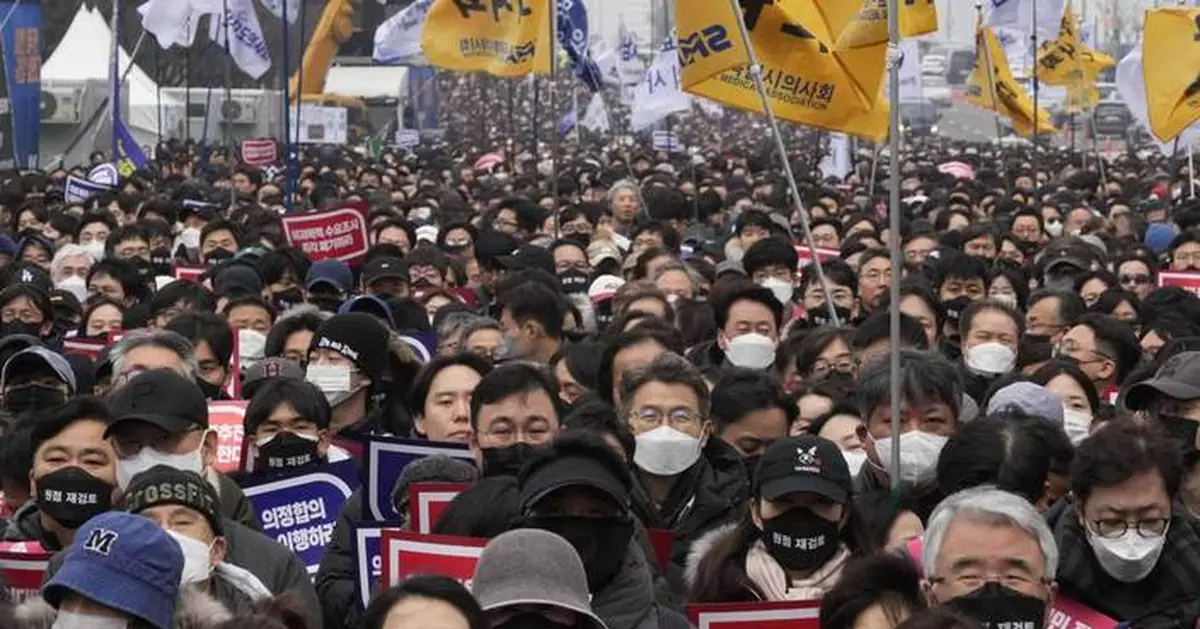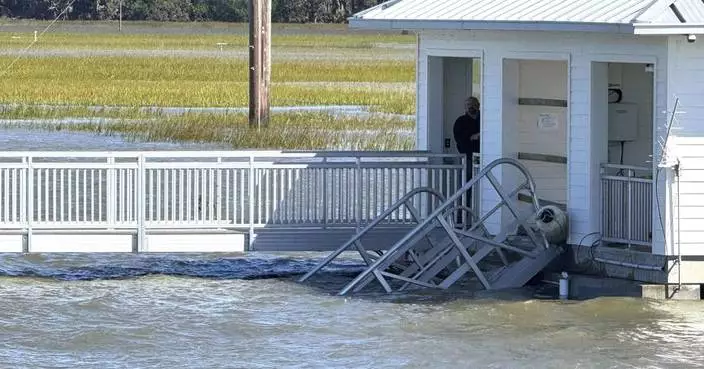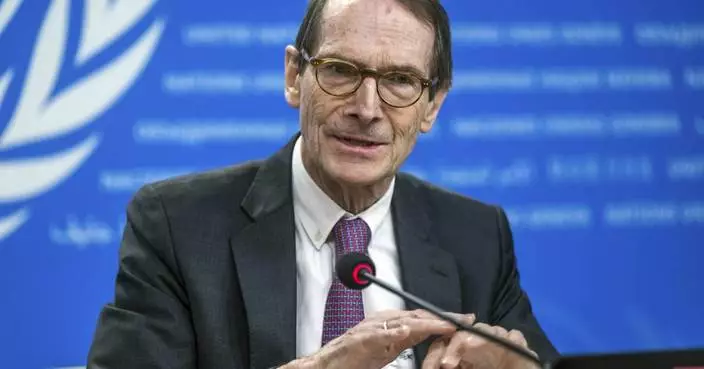SEOUL, South Korea (AP) — A South Korean court ruled in favor of the government’s contentious push to drastically boost medical school admissions on Thursday, posing a setback to concerted efforts by incumbent doctors to spike the plan.
A standoff between the government and doctors opposed to the plan has shaken the country’s medical system for months. With broad support from senior doctors, more than 12,000 junior doctors, who are medical interns and residents, remain off the job since February.
The Seoul High Court rejected a request from striking doctors and other opponents to block the plan, which would raise the yearly medical school enrollment quota by 2,000 from the current cap of 3,058.
Lee Byung-chul, a lawyer for the doctors, said he will prepare to appeal the ruling to the Supreme Court. Lim Hyun-taek, the hard-line leader of an association of doctors, said his organization will issue a statement on Friday after reviewing the verdict.
Officials have said they want to add up to 10,000 doctors by 2035 to cope with the country’s fast-aging population and a shortage of physicians in rural areas and in low-paying yet essential specialties like pediatrics and emergency departments.
Doctors say schools aren’t ready to handle an abrupt increase in students and that it would ultimately undermine the country’s medical services. But critics argue that physicians, one of the best-paid jobs in South Korea, are mainly worried that having more doctors would lower their incomes.
The request to suspend the enrollment plan was filed by 18 people including doctors, medical students and others hoping to enter medical schools.
The Seoul High Court ruled the doctors and possible future medical students aren't qualified to file administrative lawsuits, calling them a third party in the case. The court acknowledged that current medical students can suffer possible damage from the enrollment plan, but still rejected their request to protect “public welfare.” It said a suspension of the recruitment plan could cause “immense” harm to efforts to increase doctors in rural areas and other essential roles.
Prime Minister Han Duck-soo welcomed the decision, saying the government appreciates “the wise ruling by the judicial branch.” He said the government will take steps to finalize medical school admission plans for the 2025 academic year by the end of this month.
Han urged the striking junior doctors to return to work immediately, saying it's difficult to maintain the country's emergency medical system without them. But South Korean media cited some striking doctors as saying they have no intention of reporting back to work.
The striking doctors are a fraction of all doctors in South Korea, estimated to number between 115,000 and 140,000. But in some major hospitals, they account for about 30% to 40% of the doctors, assisting fully qualified doctors and department chiefs during surgeries and other treatments while training. Their walkouts have caused cancellations of numerous surgeries and other care at their hospitals and burdened South Korea's medical services.
In support of their action, many senior doctors at their schools have also submitted resignations, though they haven’t stopped treating patients.
Government officials earlier threatened to suspend the licenses of the striking doctors but later halted those administrative steps to facilitate a dialogue with the strikers.
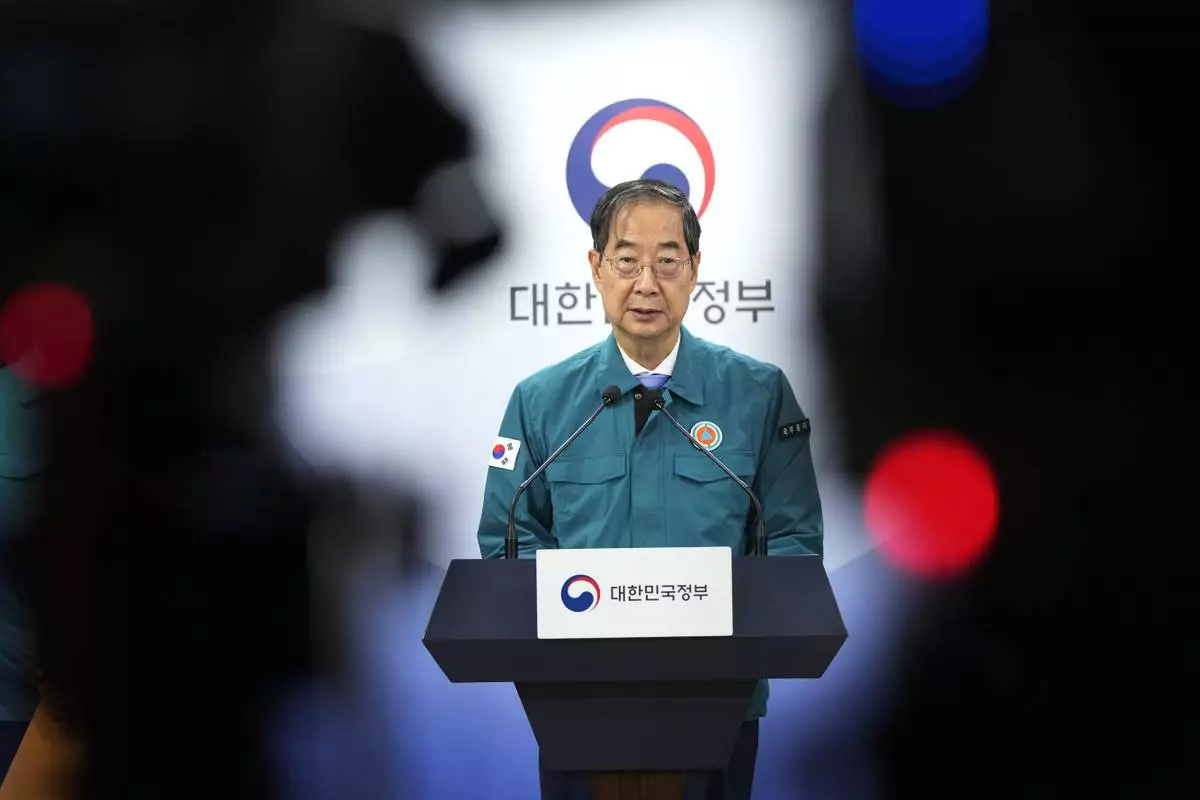
South Korean Prime Minister Han Duck-soo gives a public statement at the government complex in Seoul, South Korea, Thursday, May 16, 2024. A South Korean court ruled in favor of the government's contentious plan to drastically boost medical school admissions on Thursday. (AP Photo/Ahn Young-joon)
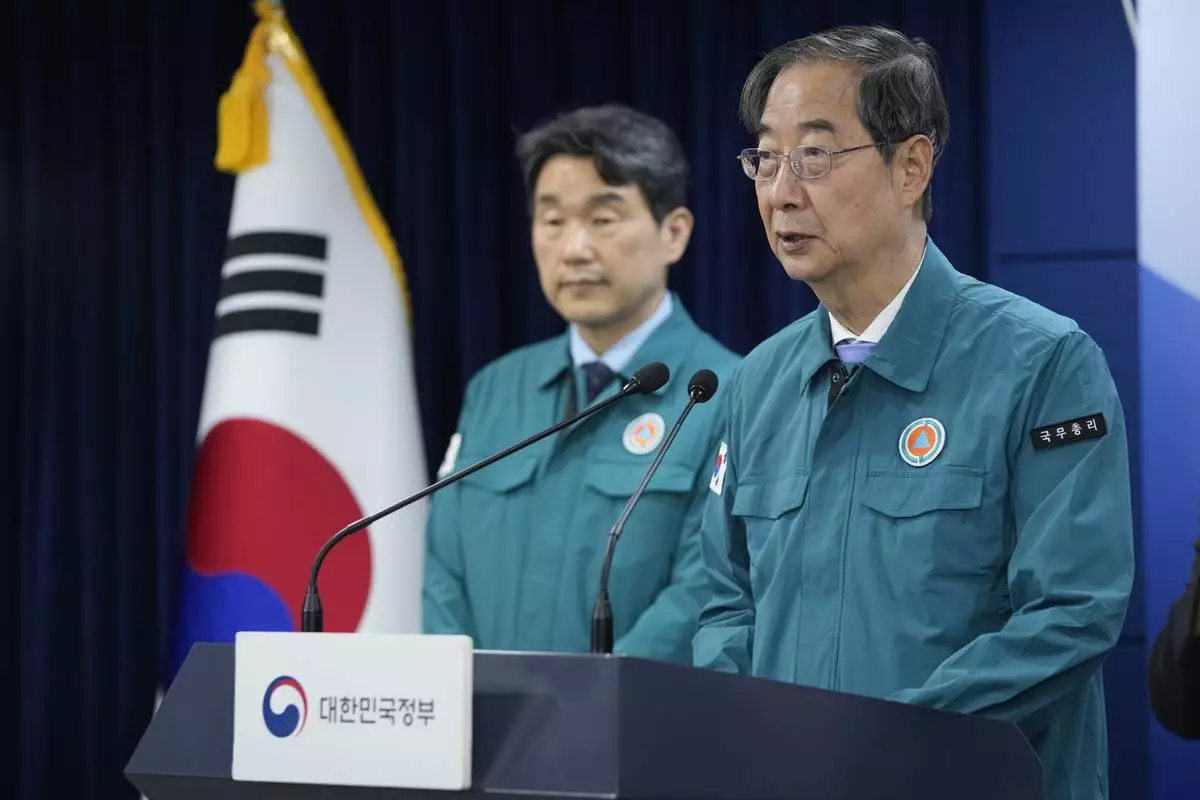
South Korean Prime Minister Han Duck-soo, right, gives a public statement at the government complex in Seoul, South Korea, Thursday, May 16, 2024. A South Korean court ruled in favor of the government's contentious plan to drastically boost medical school admissions on Thursday. (AP Photo/Ahn Young-joon)

South Korean Prime Minister Han Duck-soo arrives to give a public statement at the government complex in Seoul, South Korea, Thursday, May 16, 2024. A South Korean court ruled in favor of the government's contentious plan to drastically boost medical school admissions on Thursday. (AP Photo/Ahn Young-joon)

FILE - Doctors stage a rally against the government's medical policy in Seoul, South Korea, on March 3, 2024. A South Korean court ruled in favor of the government's plan to drastically boost medical school admissions on Thursday, May 16, 2024, media reports said. (AP Photo/Ahn Young-joon, File)
SEOUL, South Korea (AP) — North Korea on Friday bragged of its recently tested new intercontinental ballistic missile, calling it “the world’s strongest,” a claim viewed by outside experts as propaganda though the test showed an advancement in the North's quest to build a more reliable weapons arsenal.
A missile launched by North Korea on Thursday flew higher and stayed in the air for a longer duration than any other weapon the country had so far fired. It signaled that the North has achieved progress in acquiring a nuclear-armed ICBM that can hit the U.S. mainland. But foreign experts assess that the country has still a few remaining technological issues to master before acquiring such a functioning ICBM.
On Friday, the North’s Korean Central News Agency identified the missile as “Hwasong-19” ICBM and called it “the world’s strongest strategic missile” and “the perfected weapon system.”
KCNA said leader Kim Jong Un observed the launch, describing it as “an appropriate military action” to express North Korea’s resolve to respond to its enemies’ moves that escalated tensions and threats to North Korea’s national security. It said Kim thanked weapons scientists for demonstrating North Korea’s “matchless strategic nuclear attack capability.”
South Korea’s military earlier said that North Korea could have tested a solid-fueled missile but Friday’s KCNA dispatch didn’t say what propellant the Hwasong-19 ICBM uses. Observers say the color of exhaust flames seen in North Korean media photos on the launch still suggest the new ICBM uses solid fuels.
Before Thursday’s test, North Korea’s most advanced ICBM was known as the “Hwasong-18” missile which uses solid fuels. Pre-loaded solid propellants make it easier to move missiles and require much less launch preparation times than liquid propellants that must be fueled before liftoffs. So it’s more difficult for opponents to detect launches by solid-fuel missiles.
In recent years, North Korea has reported steady advancement in its efforts to obtain nuclear-tipped missiles. Many foreign experts believe North Korea likely has missiles that can deliver nuclear strikes on all of South Korea, but it has yet to possess nuclear missiles that can travel to the mainland U.S.
There are questions on whether North Korea has acquired the technology to shield warheads from the high-temperature, high-stress environment of atmospheric reentry. Many foreign analysts say North Korea also must have improved altitude control and guidance systems for missiles. They say North Korea needs an ability to place multiple warheads on a single missile to defeat its rivals’ missile defenses.
All of North Korea’s known ICBM tests, including Thursday’s, have been performed on steep angles to avoid neighboring countries. South Korean military spokesperson Lee Sung Joon said Thursday that a high-angel trajectory launch cannot verify a missile’s re-entry vehicle technology, though North Korea has previously claimed to have acquired that technology.
Observers say that Thursday's launch, the North's first ICBM test in almost a year, was largely meant to grab American attention days before the U.S. presidential election and respond to international condemnation over North Korea's reported dispatch of troops to Russia to support its war against Ukraine.
North Korea's reported troop dispatch highlights the expanding military cooperation between North Korea and Russia. South Korea. the U.S. and others worry North Korea might seek high-tech, sensitive Russian technology to perfect its nuclear and missile programs in return for joining the Russian-Ukraine war.
__
Associated Press writer Kim Tong-hyung contributed to this report.
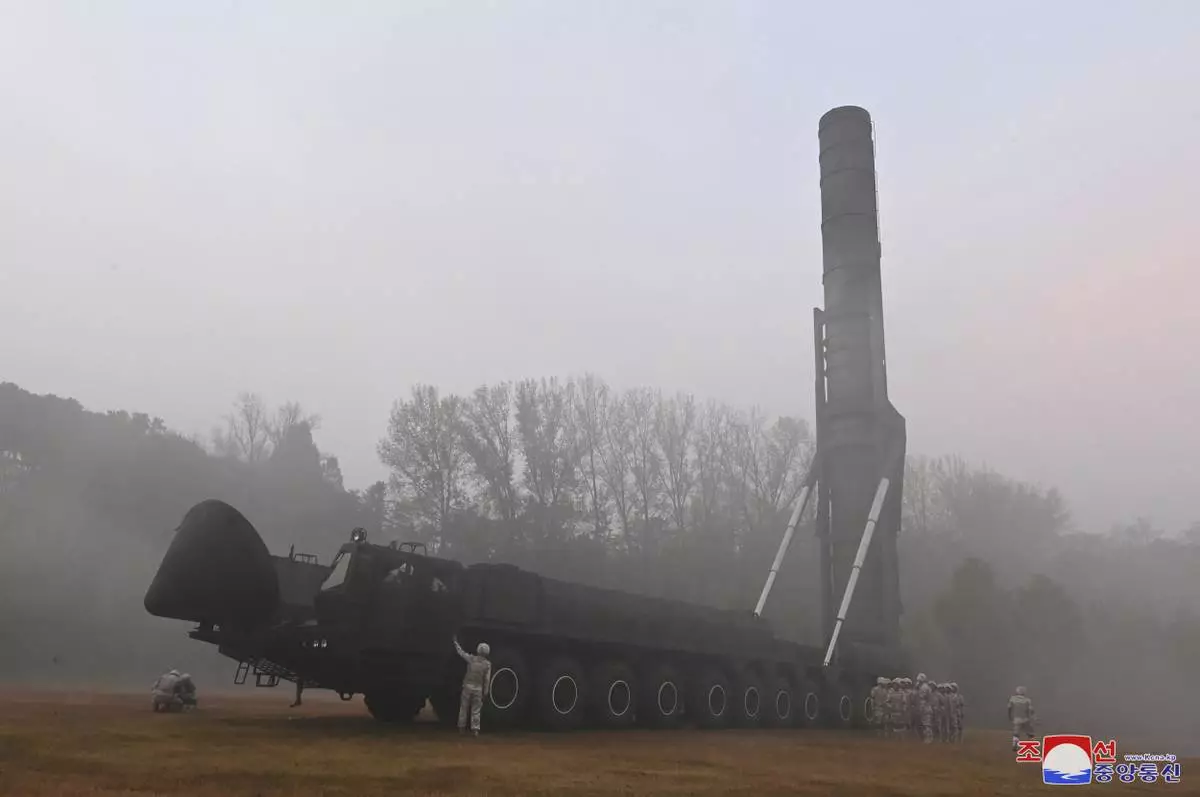
This photo provided by the North Korean government, shows what it says a test launch of new intercontinental ballistic missile "Hwasong-19" at an undisclosed place in North Korea Thursday, Oct. 31, 2024. Independent journalists were not given access to cover the event depicted in this image distributed by the North Korean government. The content of this image is as provided and cannot be independently verified. Korean language watermark on image as provided by source reads: "KCNA" which is the abbreviation for Korean Central News Agency. (Korean Central News Agency/Korea News Service via AP)

This photo provided by the North Korean government, shows what it says a test launch of new intercontinental ballistic missile "Hwasong-19" at an undisclosed place in North Korea Thursday, Oct. 31, 2024. Independent journalists were not given access to cover the event depicted in this image distributed by the North Korean government. The content of this image is as provided and cannot be independently verified. Korean language watermark on image as provided by source reads: "KCNA" which is the abbreviation for Korean Central News Agency. (Korean Central News Agency/Korea News Service via AP)
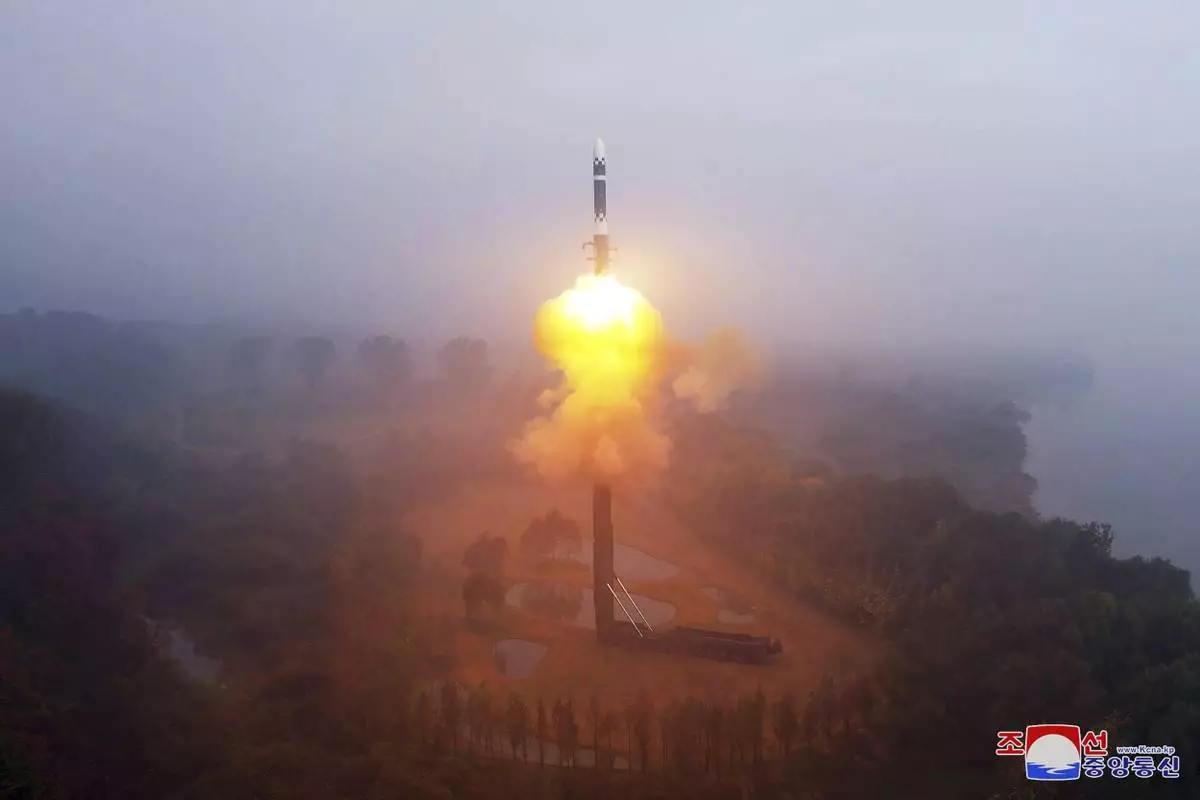
This photo provided by the North Korean government, shows what it says a test launch of new intercontinental ballistic missile "Hwasong-19" at an undisclosed place in North Korea Thursday, Oct. 31, 2024. Independent journalists were not given access to cover the event depicted in this image distributed by the North Korean government. The content of this image is as provided and cannot be independently verified. Korean language watermark on image as provided by source reads: "KCNA" which is the abbreviation for Korean Central News Agency. (Korean Central News Agency/Korea News Service via AP)






